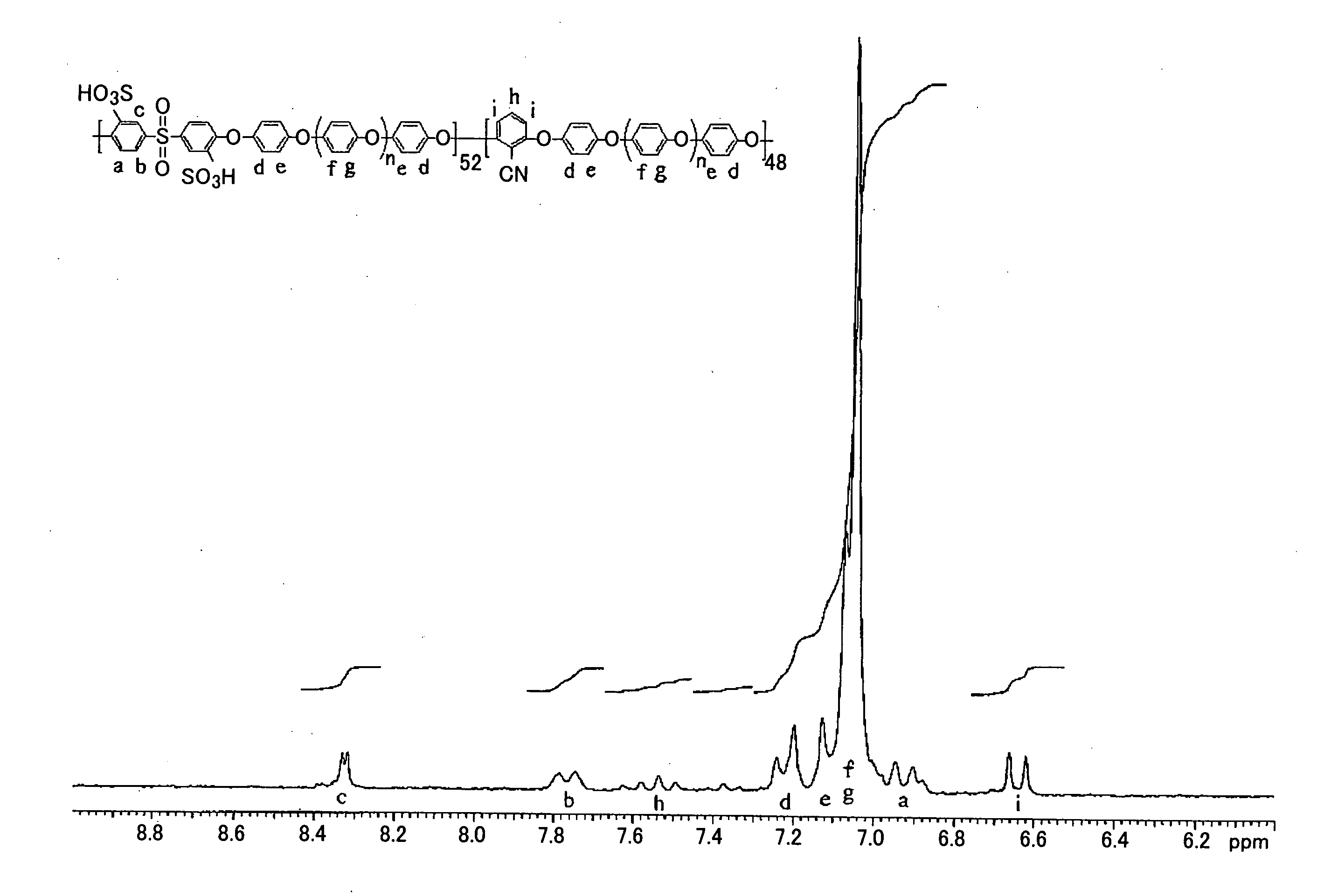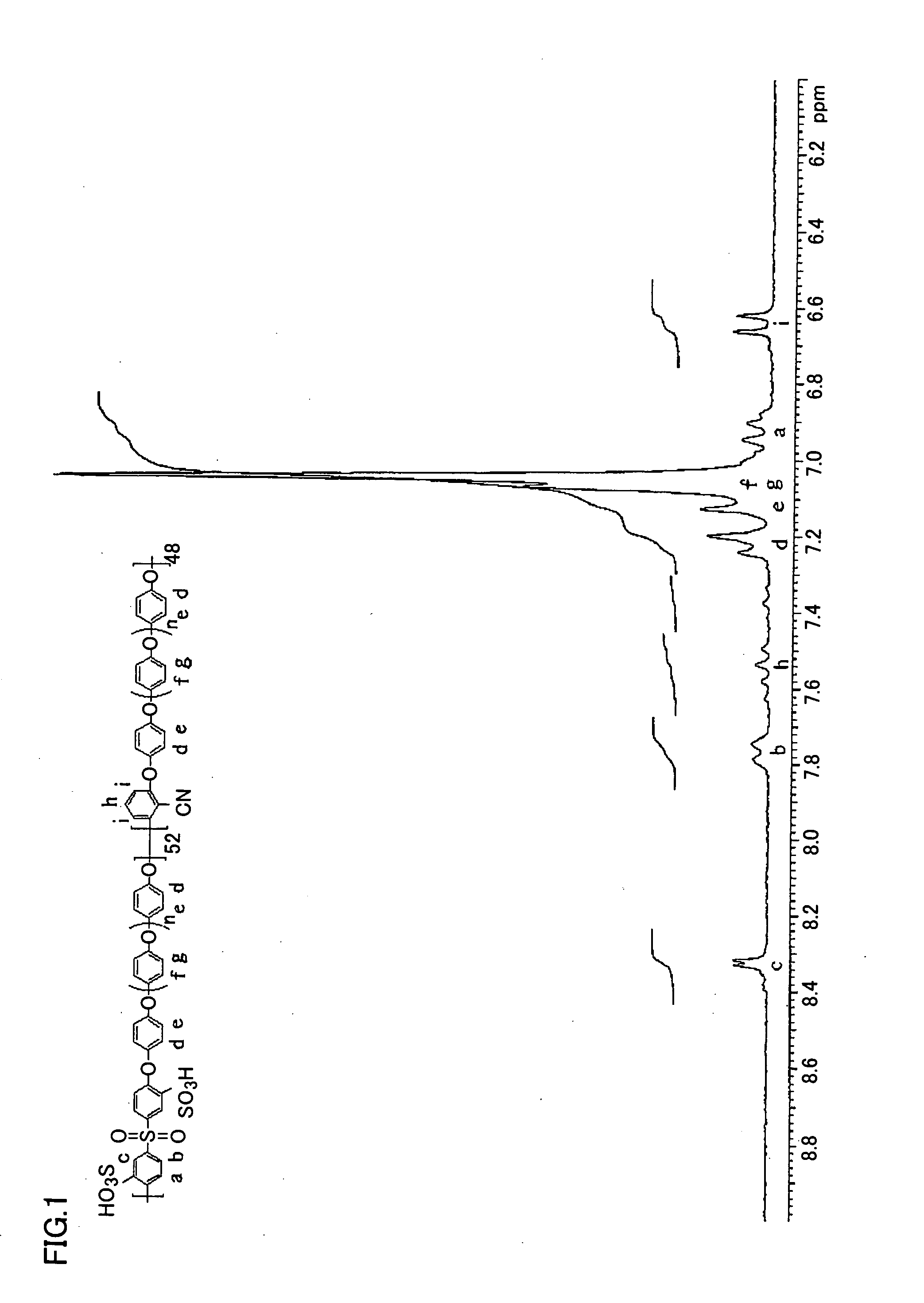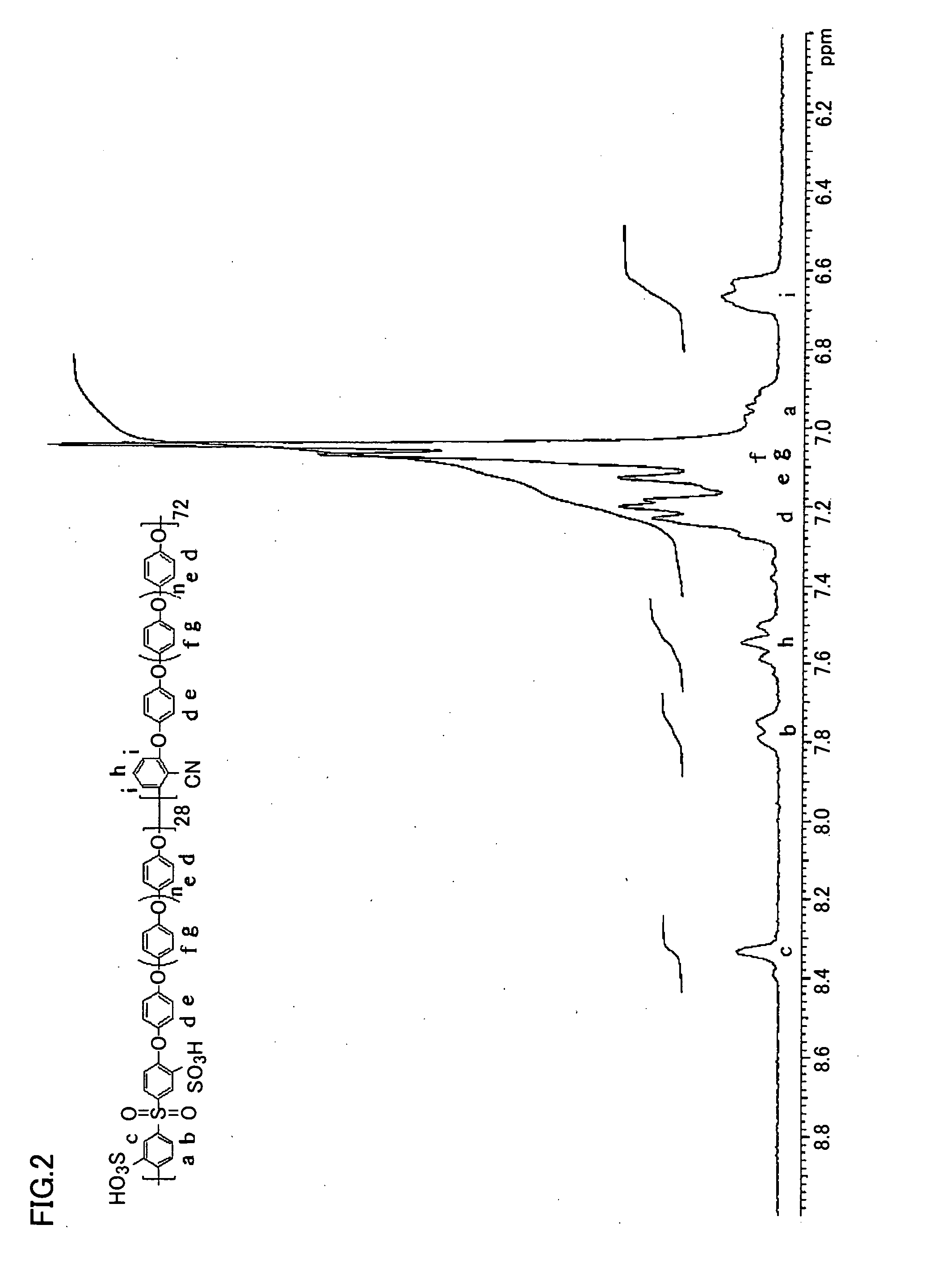Sulfonic acid group-containing polymer, method for producing the same, resin composition containing such sulfonic acid group-containing polymer, polymer electrolyte membrane, polymer electrolyte membrane/electrode assembly, and fuel cell
a technology of sulfonic acid group and polymer, which is applied in the manufacture of final products, cable/conductor manufacturing, and conductive materials, etc. it can solve the problems of excessively high membrane cost, fuel cell cannot exert sufficient performance, and power generation performance reduction, etc., and achieve excellent and the effect of ion conductivity and durability
- Summary
- Abstract
- Description
- Claims
- Application Information
AI Technical Summary
Benefits of technology
Problems solved by technology
Method used
Image
Examples
examples
[0224]In the following, the present invention is concretely described using Examples, but is not limited to these Examples.
examples 1a to 12a
[0225]Various measurements were performed in the following manner.
[0226]Viscosity of Solution: A polymer powder was dissolved in N-methylpyrrolidone so as to have a concentration of 0.5 g / dl, and the viscosity thereof was measured using an Ubbelohde viscometer in a thermostatic bath at 30° C., and the viscosity was evaluated in terms of a logarithmic viscosity (ln[ta / tb] / c) (wherein ta is the number of seconds for a sample solution to drop, tb is the number of seconds for only the solvent to drop, and c is the polymer concentration).
[0227]TGA: A thermogravimeter (TGA-50) manufactured by Shimadzu Corporation was used, and measurement was carried out in an argon atmosphere at a temperature rise rate of 10° C. / min (during the heating, the temperature was maintained at 150° C. for 30 minutes to sufficiently remove moisture).
[0228]Ion Conductivity Measurement: A platinum wire (diameter: 0.2 mm) was placed on the surface of a membrane sample in strip form on a self-made probe for measurem...
example 1a
[0235]9.6228 g (0.019588 mole) of disodium 3,3′-disulfo-4,4′-dichlorodiphenylsulfone (abbreviation: S-DCDPS), 3.1102 g (0.018082 mole) of 2,6-dichlorobenzonitrile (abbreviation: DCBN), 20.71319 g (0.037670 mole) of a terminal hydroxyl group-containing phenylene ether oligomer (abbreviation: DPE) (SPECIANOL DPE-PL, Lot C106 manufactured by Dainippon Ink and Chemicals Inc.) (In the chemical formula 3, a mixture of components wherein n is 1 to 7. The average composition as estimated by NMR measurement is n=4.0.) and 5.9873 g (0.043321 mole) of potassium carbonate were weighed into a 200 ml-four necked flask, and nitrogen was introduced therein. After addition of 100 ml of N-methyl-2-pyrrolidone, the mixture was stirred under heating, and the reaction temperature was raised to 195° C. to 200° C. and then reacted for 13 hours. After being left for cooling, the polymerized solution was poured into water to precipitate a polymer in a strand form, thereby to obtain a polymer composed of a s...
PUM
| Property | Measurement | Unit |
|---|---|---|
| glass transition temperature | aaaaa | aaaaa |
| glass transition temperature | aaaaa | aaaaa |
| thickness | aaaaa | aaaaa |
Abstract
Description
Claims
Application Information
 Login to View More
Login to View More - R&D
- Intellectual Property
- Life Sciences
- Materials
- Tech Scout
- Unparalleled Data Quality
- Higher Quality Content
- 60% Fewer Hallucinations
Browse by: Latest US Patents, China's latest patents, Technical Efficacy Thesaurus, Application Domain, Technology Topic, Popular Technical Reports.
© 2025 PatSnap. All rights reserved.Legal|Privacy policy|Modern Slavery Act Transparency Statement|Sitemap|About US| Contact US: help@patsnap.com



